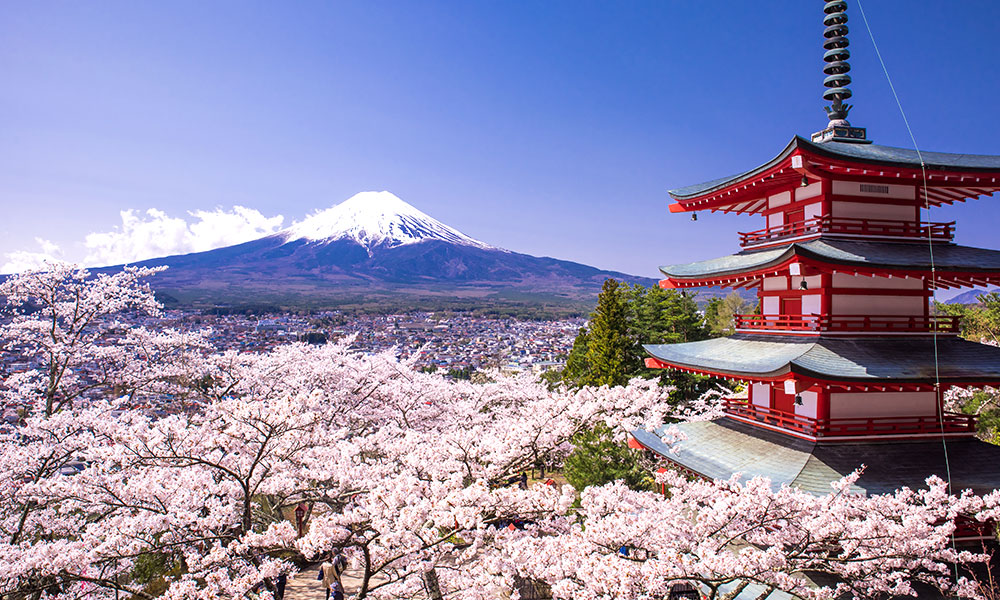Japan is a destination as traditional as it is modern that manages very well to make the connection between a rich history and an unprecedented development. And inevitably, when we talk about the history of Japan, we obviously address the question of the very many temples still perfectly preserved throughout the country. These magnificent buildings, originally built as places of worship for Buddhist rites, are still used for this purpose even if they also represent real tourist attractions. The island has nearly 70,000 temples, each more impressive than the next, so it’s difficult to make just a small selection. Nevertheless, it must be recognized that some really stand out as they are splendid.

Summary
- 1) Kinkaku-ji in Kyoto
- 2) The Meji-jingu in Tokyo
- 3) Le Kiyomizu-dera in Kyoto
- 4) Senso-ji in Tokyo
- 5) The Toda-ji in Nara
- 6) Le Nikko Tosho-gu a Nikko
- 7) The Ginkaku-ji in Kyoto
- 8) The Hoyu-ji in Nara
1) Kinkaku-ji in Kyoto

Covered in gold leaf, this temple, also called “Le Pavillon d’or”, bears its name very well. Initially built in 1397, this majestic building was burnt down in 1950 by a monk. Although it was completely destroyed following this tragedy, the exceptional park that surrounds it is perfectly preserved. It will finally be rebuilt identically in 1955 with an even thicker layer of gold leaf than on the previous version. This is the only difference of this new temple before the old one. If following the fire, the temple is removed from the list of national treasures, the park remains registered there.
2) The Meji-jingu in Tokyo

The Meji-jingu is a Shinto shrine located in Yoyogi Park, in the heart of Tokyo. This is a place (consisting of two complexes) absolutely unmissable if you visit the Japanese capital. Today it still hosts many ceremonies such as weddings in a breathtaking setting. You can also find a shrine here dedicated to Emperor Meiji and his wife.
3) Le Kiyomizu-dera in Kyoto

Listed as a UNESCO World Cultural Heritage Site, this temple is certainly one of the best known and most visited in Kyoto. Located to the east of the city, it would date from 778, even if the current building dates from 1633. This absolutely formidable temple even has a large waterfall in its enclosure. The water comes from the surrounding hills and is said to have therapeutic properties.
4) Senso-ji in Tokyo

The Senso-ji is a Buddhist temple and it is also the oldest in the Japanese capital. Its construction was completed in 628 following the idea of three men who devoted their lives to preaching the Buddhist way. When you arrive at the temple, you can enjoy an absolutely fantastic panorama and discover the city of Tokyo from a new perspective.
5) The Toda-ji in Nara

This is a large Buddhist temple in which all branches of Japanese Buddhism are studied. You will find in this imposing building the largest wooden construction in the world: the Daibutsu-den, in which there is a giant bronze statue of the Buddha. By going there, you will have the opportunity to take beautiful photos.
6) Le Nikko Tosho-gu a Nikko

This large temple is in fact a sanctuary built in 1617 on the orders of the shogun of the time, in order to honor the wishes of his late father. Its architecture differs from other more traditional Japanese temples, which is why it is such a touristic place classified as a World Heritage Site. The Nikko Tosho-gu is mainly known for being the favorite place of many monkeys.
7) The Ginkaku-ji in Kyoto

Also called “ The Silver Pavilion ”, this temple was designed to compete with Kinkaku-ji (“ The Golden Pavilion ”). Built in 1482, so it was originally supposed to be covered in silver, but because of the Onin War, this was never done. This beautiful building is often taken as an example to demonstrate the refinement and simplicity of Japanese culture. The Japanese themselves also think that it is much better that way than if it were covered in silver.
8) The Hoyu-ji in Nara

The oldest buildings of this temple would have been built around 710 and would therefore be the oldest wooden constructions in the world. This beautiful temple without artifice became in 1993 the first Japanese site inscribed on the World Heritage List. It is also important to know that it is full of very valuable art objects.
Did you like this article? Do not hesitate to share it on social networks and subscribe to Discover the World on Google News to not miss any articles!